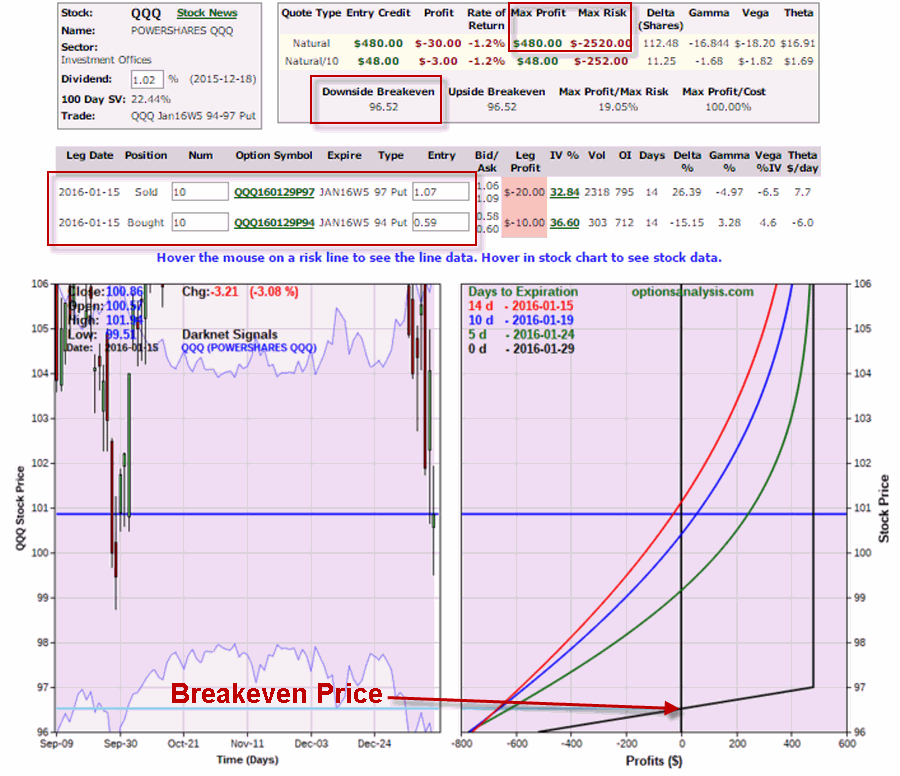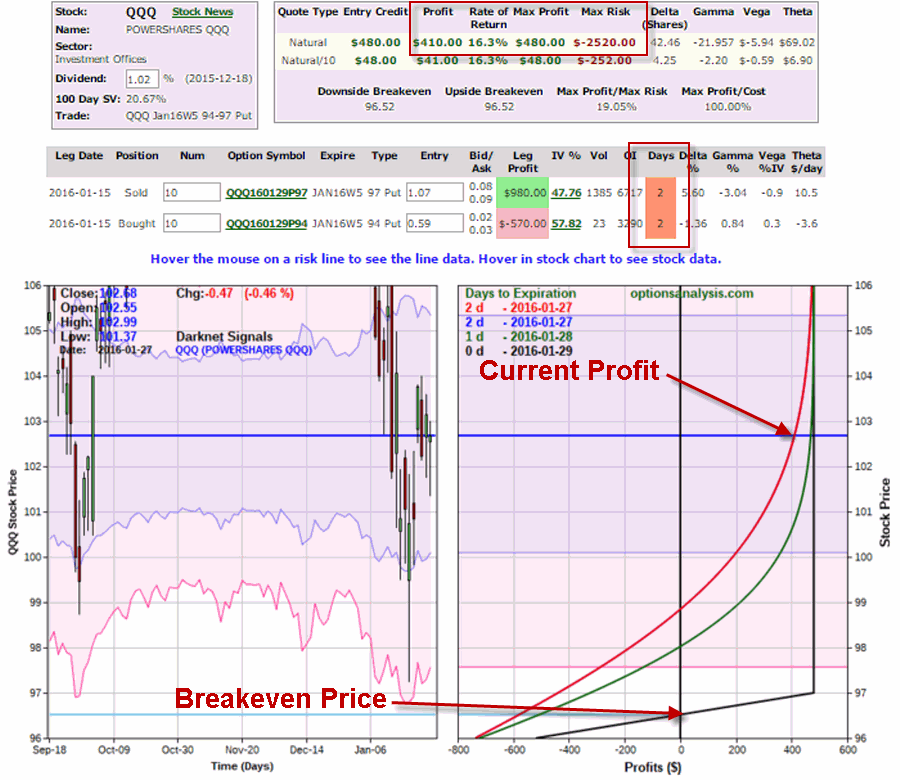As you will see in a moment – describing the current situation as “white knuckle time” may be a slight overstatement. But then again maybe not.
In this article I highlighted an example trade using a “bull put spread” using options on (O:QQQ) (an ETF that tracks the Nasdaq 100). The idea was that as long as QQQ did anything besides plummet for awhile the trade would make money. The original trade on the entry date appears in Figure 1.
(Courtesy www.OptionsAnalysis.com)
In 12 calendar days since entry, QQQ has advanced modestly from $100.86 to $102.68. Figure 2 displays the trade as of mid-day Wednesday, 1/27. The options expire at the close on Friday 1/29 so there are only two (OK, and a half) days left until expiration.
(Courtesy www.OptionsAnalysis.com)
As of the time Figure 2 was created:
- QQQ was trading at $102.68
- The breakeven price for this trade is $96.52
- The trade presently shows an open profit of $410
- The maximum profit potential is $480
So the choices are:
A) Close the trade now, take the $410 profit and not worry about what will happen between now and the close on Friday
B) Hold the trade in hopes that QQQ will not crater –6% between now and the close on Friday. The hope here is that the options will expire worthless, no action will need to be taken and the full $480 maximum profit will be realized.
So which is the correct choice? That is not for me to say. The purpose of this article is simply to alert you to the possibilities and also to point out that things can get a little “squirmy” near expiration.
In this case, anything less than a decline of -5.6% (to the 97 strike price) will allow this trade to earn the full $480 profit.
How you feel about the likelihood of that happening is one thing that can guide your approach. Another (better) idea is to plan ahead of time (like when you first enter the trade) and either:
- Set a profit target (for example, 80% or 84% or 90% of the maximum profit potential) and close the trade if and when that target is hit
- Set a “fail safe” percentage value above the breakeven price. For example, if you choose 2%, then as long as the price of the underlying security (QQQ in this example) is that distance above your breakeven price you may simply “hold on” and try to ride it out to expiration.
Summary
One key to successfully trading credit spreads is to NOT find yourself a few days before expiration saying “Oh my, what do I do now?”


